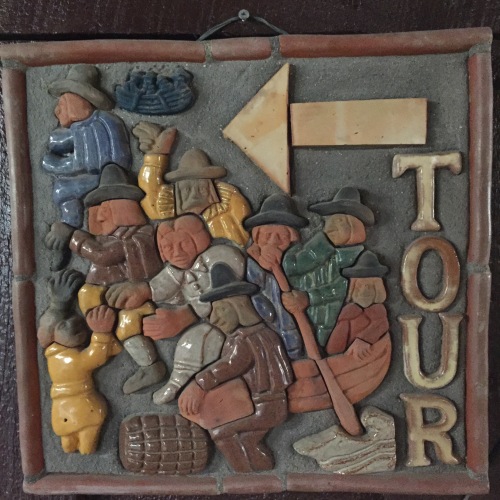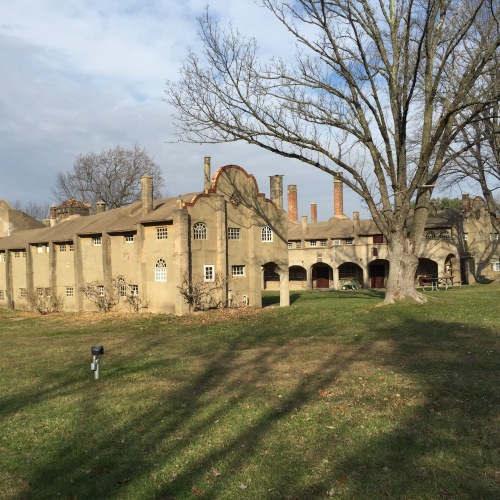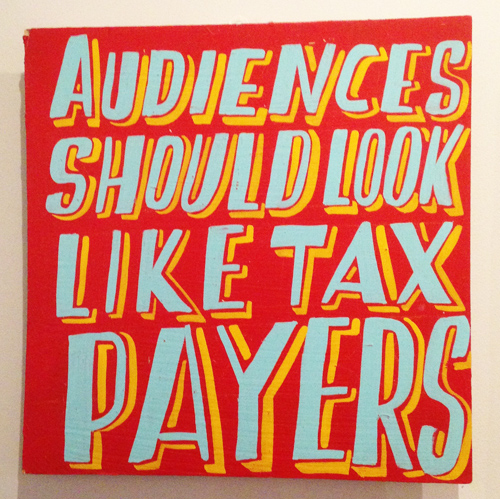Henry Chapman Mercer (1856-1930) told stories with tiles.  In Doylestown, PA. you can find three museums: The Mercer Museum, Fonthill (Mercer’s house) and the Moravian Pottery and Tile Works (founded by Mercer and still in operation). I’ve been visiting these places for all of my life, most recently in December. Pile in for a quick tour of the Moravian Tile Works.
In Doylestown, PA. you can find three museums: The Mercer Museum, Fonthill (Mercer’s house) and the Moravian Pottery and Tile Works (founded by Mercer and still in operation). I’ve been visiting these places for all of my life, most recently in December. Pile in for a quick tour of the Moravian Tile Works. Mercer was a scholar, an artist, an archaelogist, and a world traveler. He seemed curious about all things, and he built curious and unique places. The Moravian Tile Works was made of poured concrete and built in the style of a Spanish mission; somehow it fits right into Bucks County, Pennsylvania.
Mercer was a scholar, an artist, an archaelogist, and a world traveler. He seemed curious about all things, and he built curious and unique places. The Moravian Tile Works was made of poured concrete and built in the style of a Spanish mission; somehow it fits right into Bucks County, Pennsylvania. Before founding the tile works Mercer apprenticed with a German-American potter. He used local clay. With this local clay and from this specific place he told tales that ranged the world and dipped into all his areas of knowledge and interest.
Before founding the tile works Mercer apprenticed with a German-American potter. He used local clay. With this local clay and from this specific place he told tales that ranged the world and dipped into all his areas of knowledge and interest.
 Many of his original designs were based on Moravian cast iron stove designs – thus the name of the tile works.
Many of his original designs were based on Moravian cast iron stove designs – thus the name of the tile works.
 He was influenced by the Arts and Crafts movement in England. His tiles are decorative and rich with pattern.
He was influenced by the Arts and Crafts movement in England. His tiles are decorative and rich with pattern.
Most of all they tell stories. There are stories of workers and craftspeople.

 Of seasonal work
Of seasonal work
 of journeys
of journeys of play
of play and quarrels.
and quarrels. They tell old stories
They tell old stories
 and of new(ish) discoveries:
and of new(ish) discoveries: The tiles tell their stories on every available surface of Fonthill, and on many walls of the Moravian Tile Works and the Mercer Museum.
The tiles tell their stories on every available surface of Fonthill, and on many walls of the Moravian Tile Works and the Mercer Museum.
 The tiles are still being produced today.
The tiles are still being produced today.
Here is a quick peak outside and inside the Mercer Museum.
 The museum is a treasure trove of tools and objects from America’s past. It is also a peek into the mind of Henry Chapman Mercer. His interests, passions and point of view are all evident in the structure and contents of the museum. All of these things also go into the designs of the tiles: the tiles are the specific expression and compression of who Mercer was.
The museum is a treasure trove of tools and objects from America’s past. It is also a peek into the mind of Henry Chapman Mercer. His interests, passions and point of view are all evident in the structure and contents of the museum. All of these things also go into the designs of the tiles: the tiles are the specific expression and compression of who Mercer was.
What does this have to do with children’s books? Children’s books tell stories. A book tells one specific story, but all of the experiences and knowledge of the author and illustrator contribute to the depth of what is created. Mercer told stories with tiles. His travels and studies, his eye for beauty, his respect for work and workers, his love of history and his humor bring the stories alive. He used his head, hands and heart.
Thanks to Henry Chapman Mercer for letting us sip from his cup of knowledge.
































